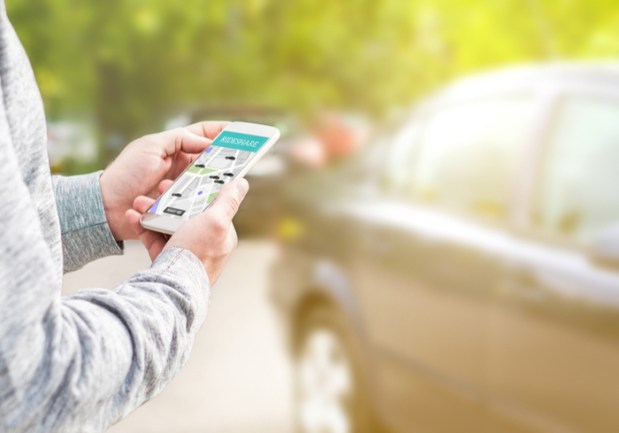Cities Partner With Apps To Create Their Own Ridesharing Services

Many cities have bus systems, but they’re not always well-utilized by the majority of residents. The city of Arlington, Texas, located just outside Dallas, for example, had a single bus route — and discovered that most of its riders were students at the University of Texas branch there.
So, late last year, Arlington voted to end the route and replaced it with a ridesharing service in December. Like a few communities in the U.S., Arlington went with Via, a technology developer and provider of dynamic on-demand shared rides, to provide the network technology.
Using the Via technology, riders in Arlington are able to get a seat in one of 10 six-passenger vans roving city streets for a $3 fare. Riders who don’t have a smartphone can use a dial-in phone number, which is available in addition to the app.
As Via rolls the service out in Arlington — and also in West Sacramento, California, in the spring — they might be part of a larger trend, as local governments seek to replace or augment their transportation efforts with their own rideshare services.
Via’s CEO Daniel Ramot has taken this idea a step further and believes that ridesharing will someday become the primary mode of transportation for those living in urban environments.
“In the city of the future, everyone will be getting around in dynamically routed, shared vehicles,” Ramot told industry publication Equipment World.
In short, ridesharing could grow to be the dominant method of transportation, and companies like Via can provide technology for municipalities to serve those in need of a ride with digital carpools.
The Technology
Rideshare platforms have the potential to shape traffic patterns and the environment in cities. For example, they could reduce traffic in cities that already have too many cars on overtaxed roads — in addition to providing some economic advantages for riders and drivers.
“Everyone benefits when we increase the efficiency of vehicles on the road,” Ramot said. “Cities benefit from reduced congestion and emissions, riders benefit from affordable and convenient transportation options, and drivers benefit from a system optimized to increase their earnings.”
Ridesharing platforms also have a cost benefit for local municipalities: They can be significantly cheaper than other transportation projects.
In New Jersey, for example, the city of Summit is offering to subsidize Uber rides to and from its transit station as it seeks to free up parking spaces during a six-month trial. The city is conducting the experiment to try to avoid building yet another parking garage
While a garage would cost $10 million and the city would lose use of the land on which it would be built, the Uber subsidies are projected to only cost $167,000 a year.
Federal subsides can help reduce the cost of rideshare programs, too. In Arlington, the city is paying one-third of their pilot program’s cost, $322,500, while The Federal Transit Authority is picking up the rest of the tab, according to the city.
The Rideshare App Market
Municipalities are not the only rideshare partners. Sometimes large employers within major U.S. cities have partnered with companies such as Scoop to bring rideshare transportation to their employees.
Similar to Via, passengers can use Scoop to connect with co-workers or neighbors so they can carpool to and from work together.
In Seattle, Cisco, HP, Yahoo and other companies have worked with the Scoop app to facilitate about 650,000 carpool trips since 2015. And employers like LinkedIn in California, where Scoop also operates, are seeing the benefits.
“They are helping our employees to be more successful,” Mike Alba, head of Global Transportation at LinkedIn, told Forbes. “And we are all helping to contribute to a reduction in traffic.”
Beyond Scoop, there are, of course, Uber and Lyft, which offer Uber Pool and Lyft Line, which are available in select areas.
Future
Beyond digital carpools, self-driving vehicles might be next on the radar for local governments and private companies. For example, the EasyMile shuttle can drive on its own, while reaching a top speed of 25 miles per hour.
At a cost of $250,000, the vehicle has six seats and no driver. It travels along programmed routes and will quickly stop if an object or person comes in front of it.
So, if vehicles such as EasyMile take hold, perhaps riders will be able to catch a self-driving shuttle if a van — or shared car — is not nearby to take them on their way.
